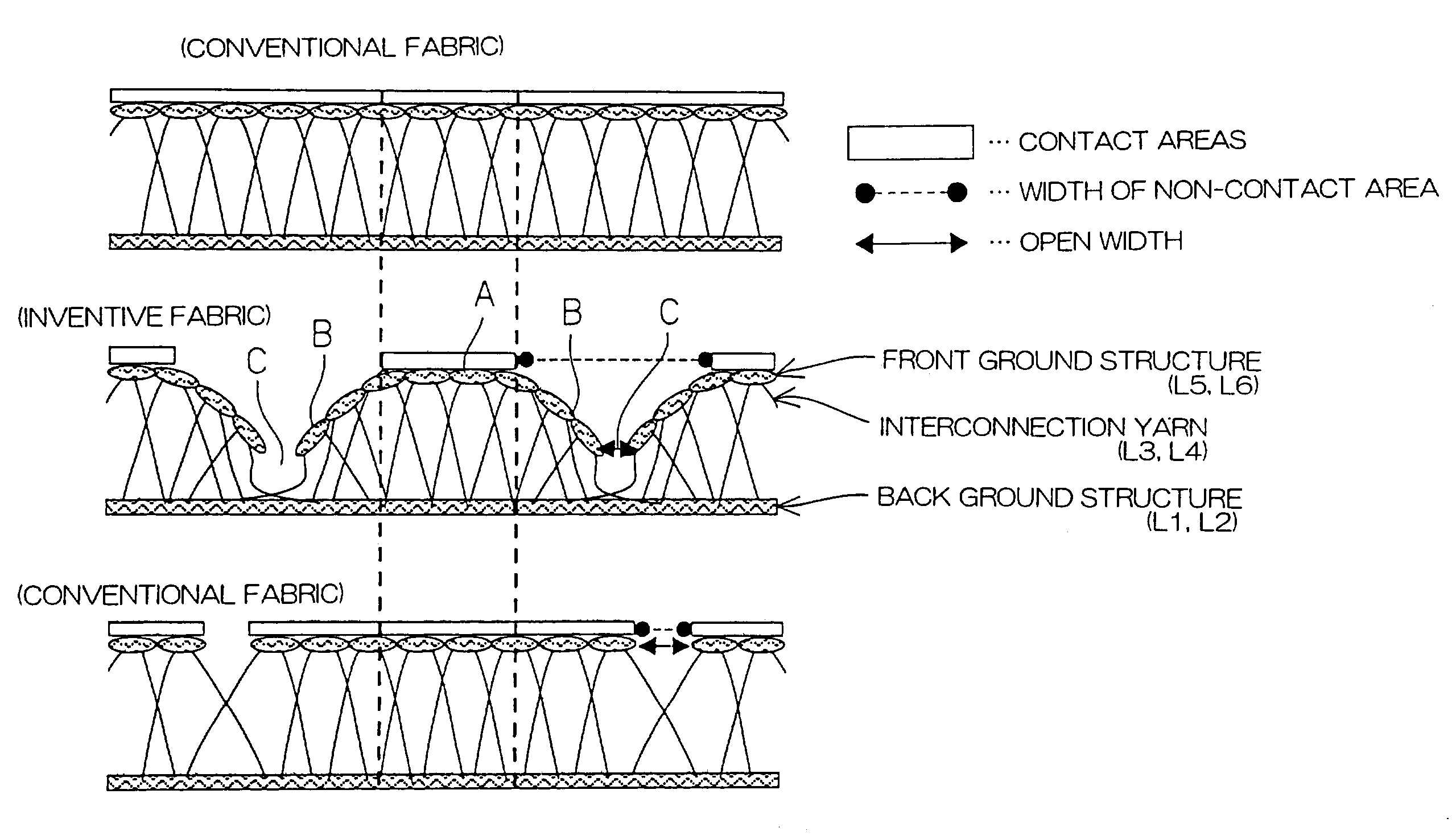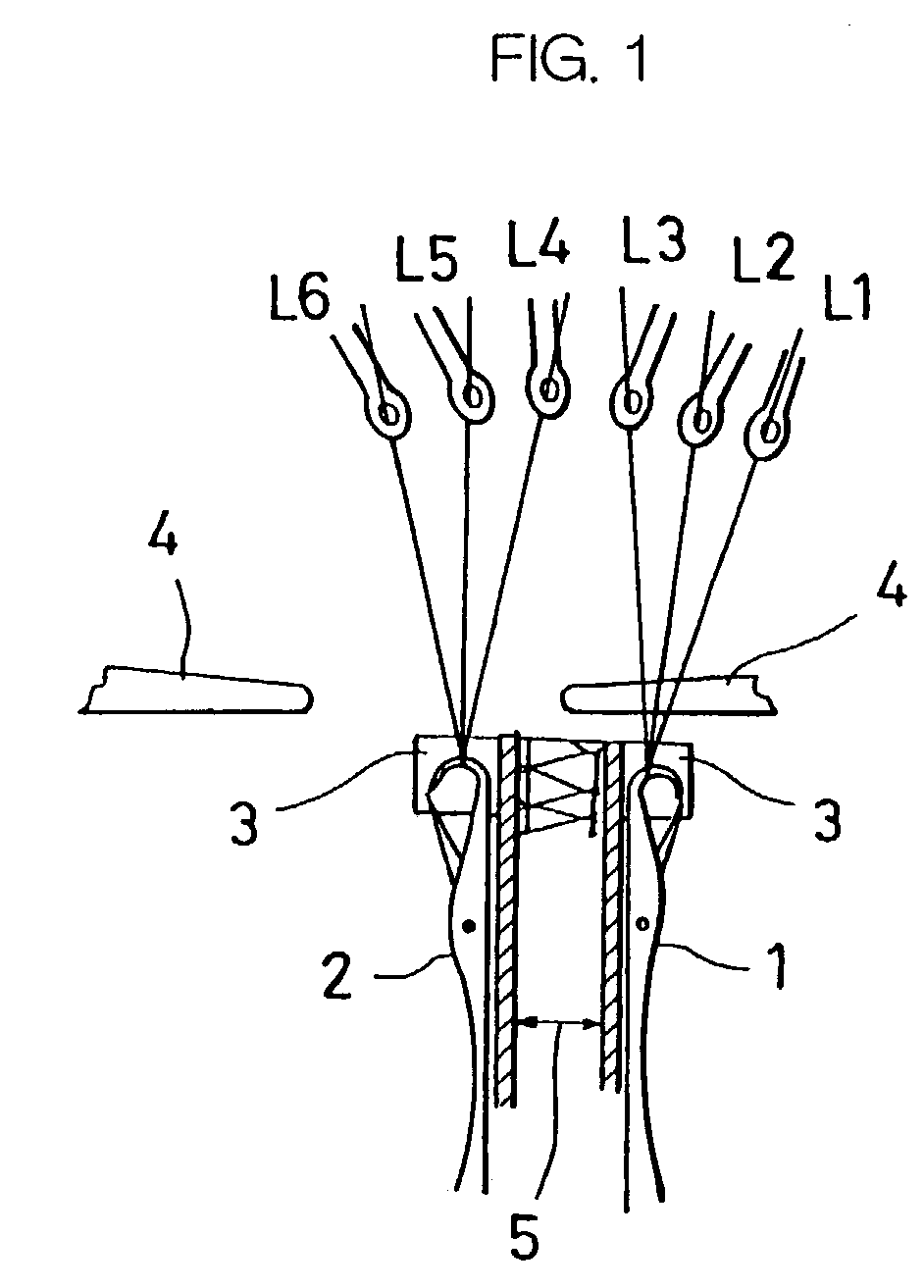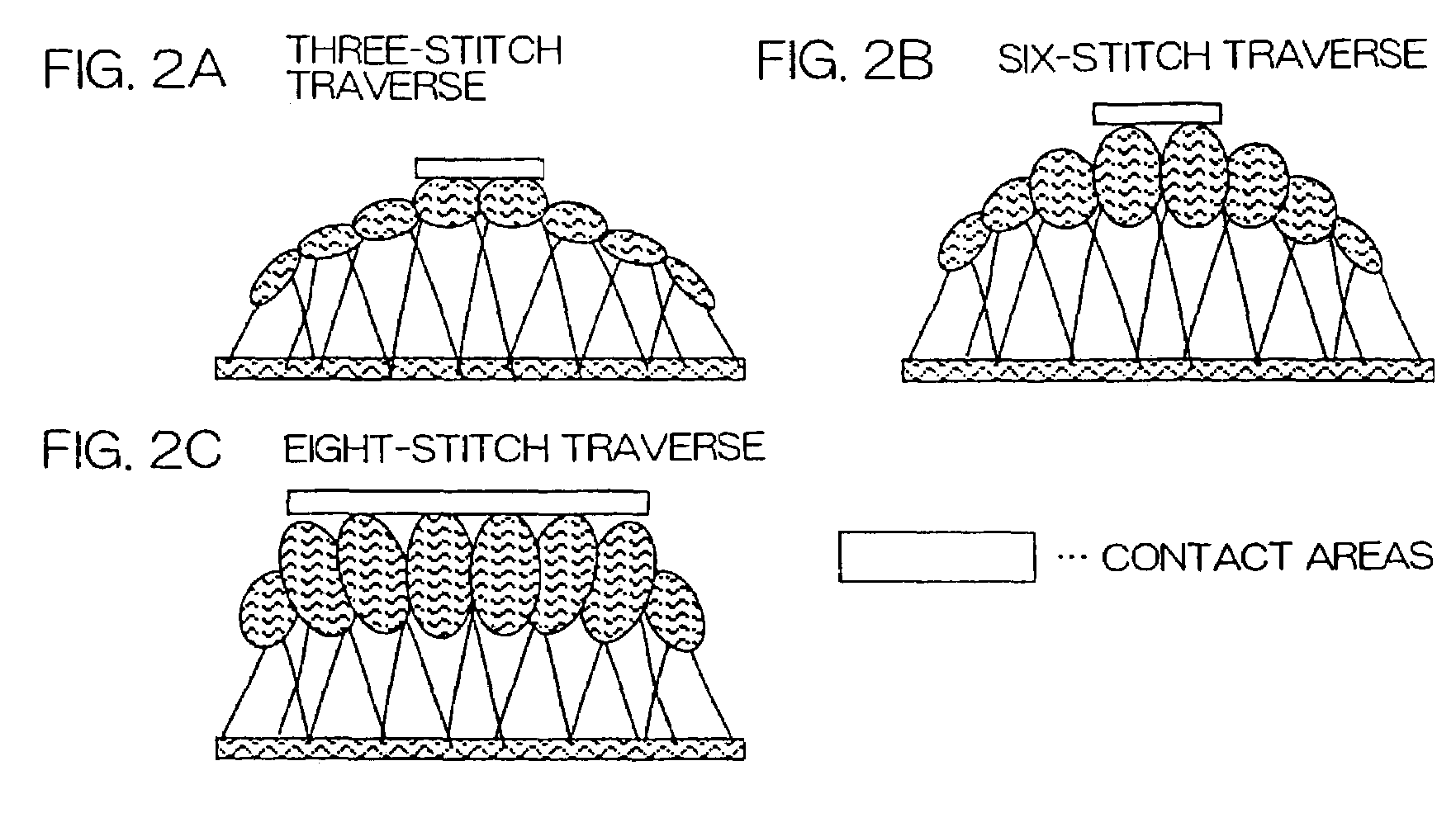Three dimensional knitted fabric having unevenness
a three-dimensional knitted fabric and uneven technology, applied in knitting, ornamental textile articles, weaving, etc., can solve the problems of poor texture of the fabric, collapsed stitches, and difficulty in sustaining the ribbed pattern, and achieve excellent air permeability and cushioning properties, light weight, and high compression elasticity.
- Summary
- Abstract
- Description
- Claims
- Application Information
AI Technical Summary
Benefits of technology
Problems solved by technology
Method used
Image
Examples
example 1
[0082]A three-dimensional knitted fabric was produced on the basis of a design as shown in FIG. 11 by employing 100% polyester yarns as ground yarns and interconnection yarns. The fineness of ground yarns of an uneven ground structure of the fabric was 167 decitex.
[0083]The uneven ground structure was knitted by guiding the ground yarns through the guide bars L5 and L6 by a traverse width of three stitches. The resulting three-dimensional fabric structure was preset at 190° C. for one minute, dyed at 130° C., dried, and finally set at 150° C. for one minute. Thus, a three-dimensional knitted fabric was obtained which had a thickness of 1.8 mm and a knitting density of 38 courses / inch and 24 wales / inch and included projections each having a curved shape having a distinct curvature in section.
[0084]The three-dimensional knitted fabric thus obtained was evaluated by the aforesaid evaluation method. The results are shown in Table 1.
example 2
[0085]A three-dimensional knitted fabric was produced on the basis of a design as shown in FIG. 12 by employing 100% polyester yarns as ground yarns and interconnection yarns. The fineness of ground yarns of an uneven ground structure of the fabric was 330 decitex.
[0086]The uneven ground structure was knitted by guiding the ground yarns through the guide bars L5 and L6 by a traverse width of three stitches. The resulting three-dimensional fabric structure was preset at 190° C. for one minute, dyed at 130° C., dried, and finally set at 150° C. for one minute. Thus, a three-dimensional knitted fabric was obtained which had a thickness of 2.2 mm and a knitting density of 38 courses / inch and 24 wales / inch and included projections each having a curved shape having a distinct curvature in section.
[0087]The three-dimensional knitted fabric thus obtained was evaluated by the aforesaid evaluation method. The results are shown in Table 1.
example 3
[0088]A three-dimensional knitted fabric was produced on the basis of a design as shown in FIG. 13 by employing 100% polyester yarns as ground yarns and interconnection yarns. The fineness of ground yarns of an uneven ground structure of the fabric was 330 decitex.
[0089]The uneven ground structure was knitted by guiding the ground yarns through the guide bars L5 and L6 by a traverse width of four stitches. The resulting three-dimensional fabric structure was preset at 190° C. for one minute, dyed at 130° C., dried, and finally set at 150° C. for one minute. Thus, a three-dimensional knitted fabric was obtained which had a thickness of 2.7 mm and a knitting density of 38 courses / inch and 24 wales / inch and included projections each having a curved shape having a distinct curvature in section.
[0090]The three-dimensional knitted fabric thus obtained was evaluated by the aforesaid evaluation method. The results are shown in Table 1.
PUM
| Property | Measurement | Unit |
|---|---|---|
| diameter | aaaaa | aaaaa |
| size | aaaaa | aaaaa |
| thickness | aaaaa | aaaaa |
Abstract
Description
Claims
Application Information
 Login to View More
Login to View More - R&D
- Intellectual Property
- Life Sciences
- Materials
- Tech Scout
- Unparalleled Data Quality
- Higher Quality Content
- 60% Fewer Hallucinations
Browse by: Latest US Patents, China's latest patents, Technical Efficacy Thesaurus, Application Domain, Technology Topic, Popular Technical Reports.
© 2025 PatSnap. All rights reserved.Legal|Privacy policy|Modern Slavery Act Transparency Statement|Sitemap|About US| Contact US: help@patsnap.com



